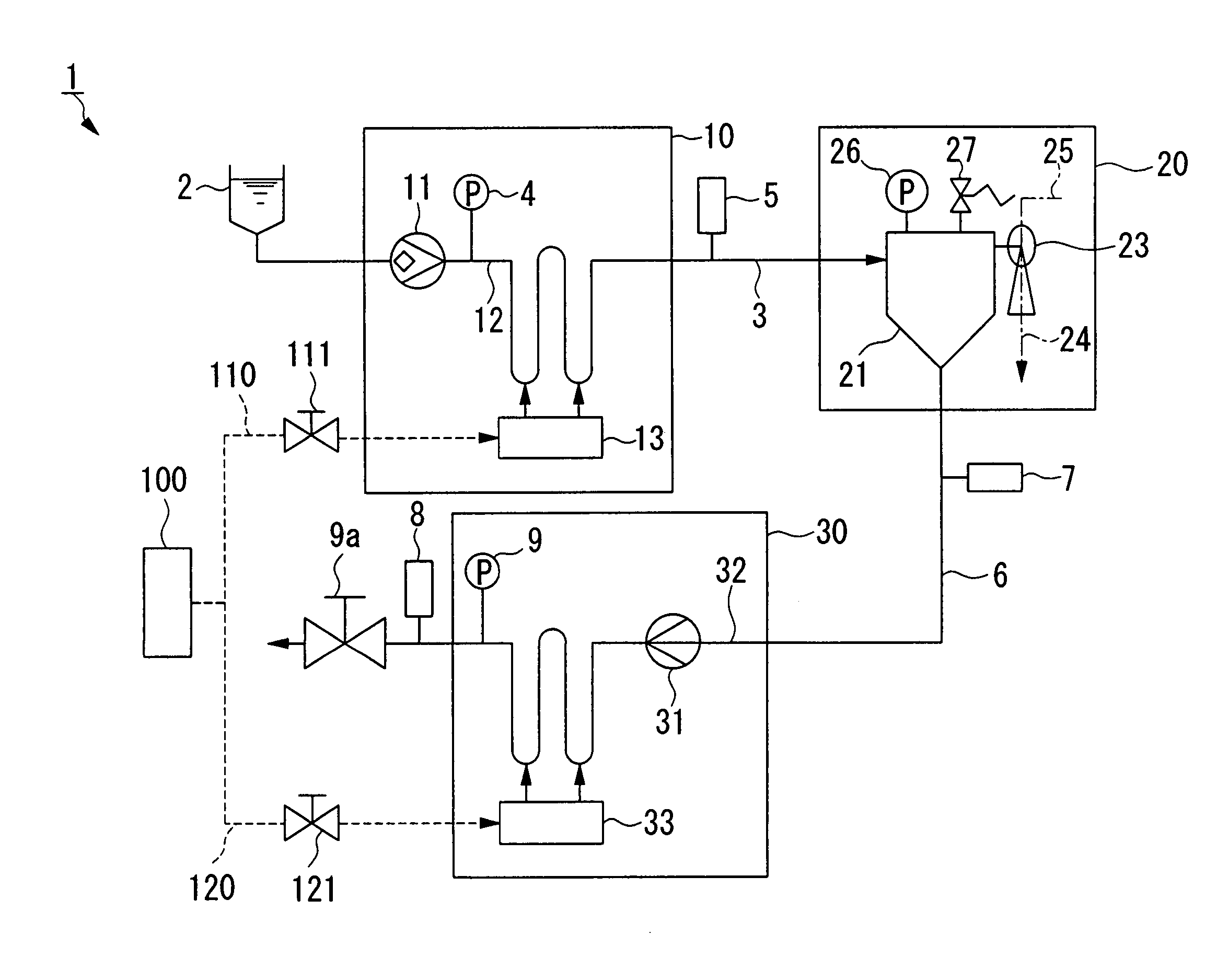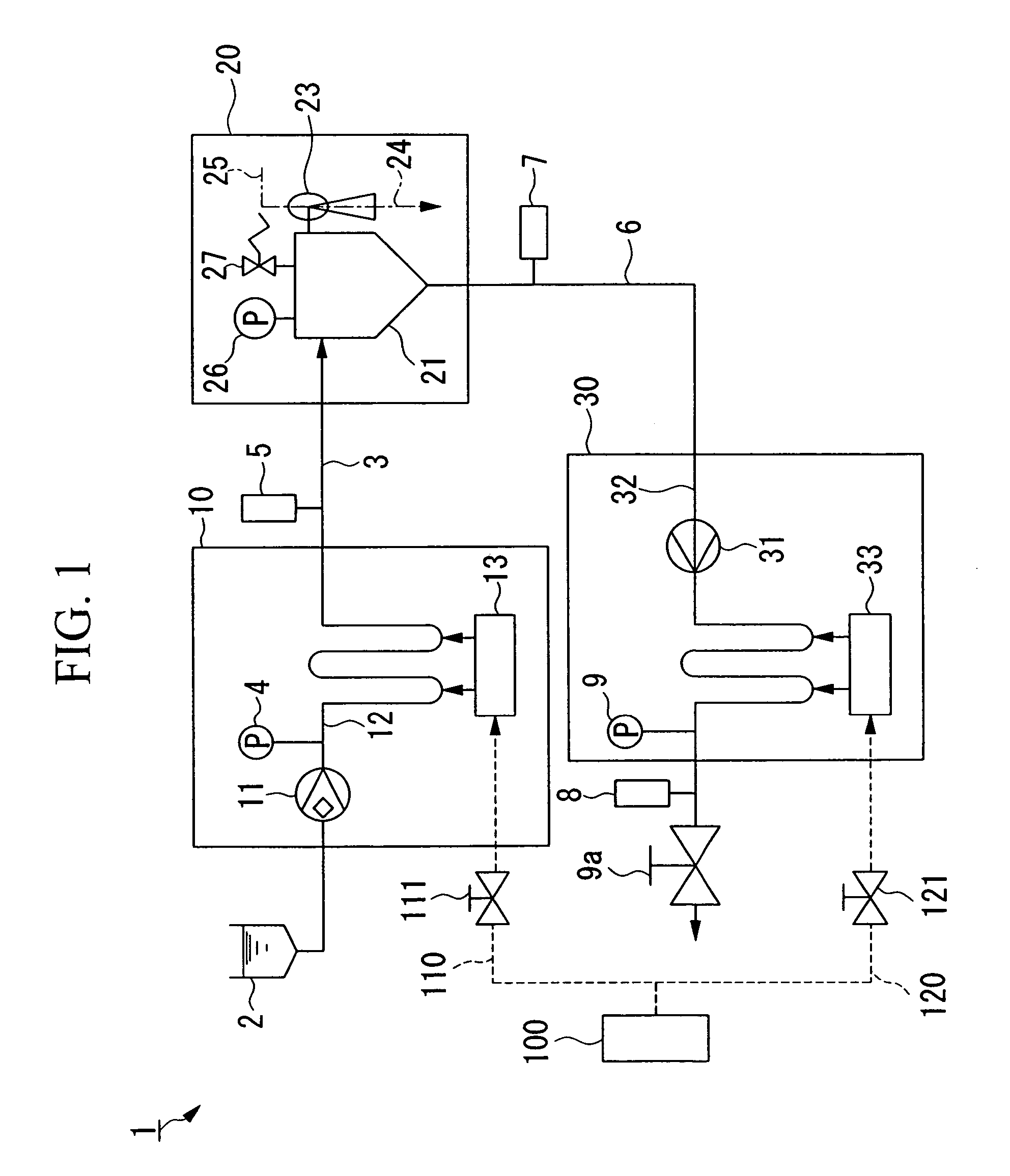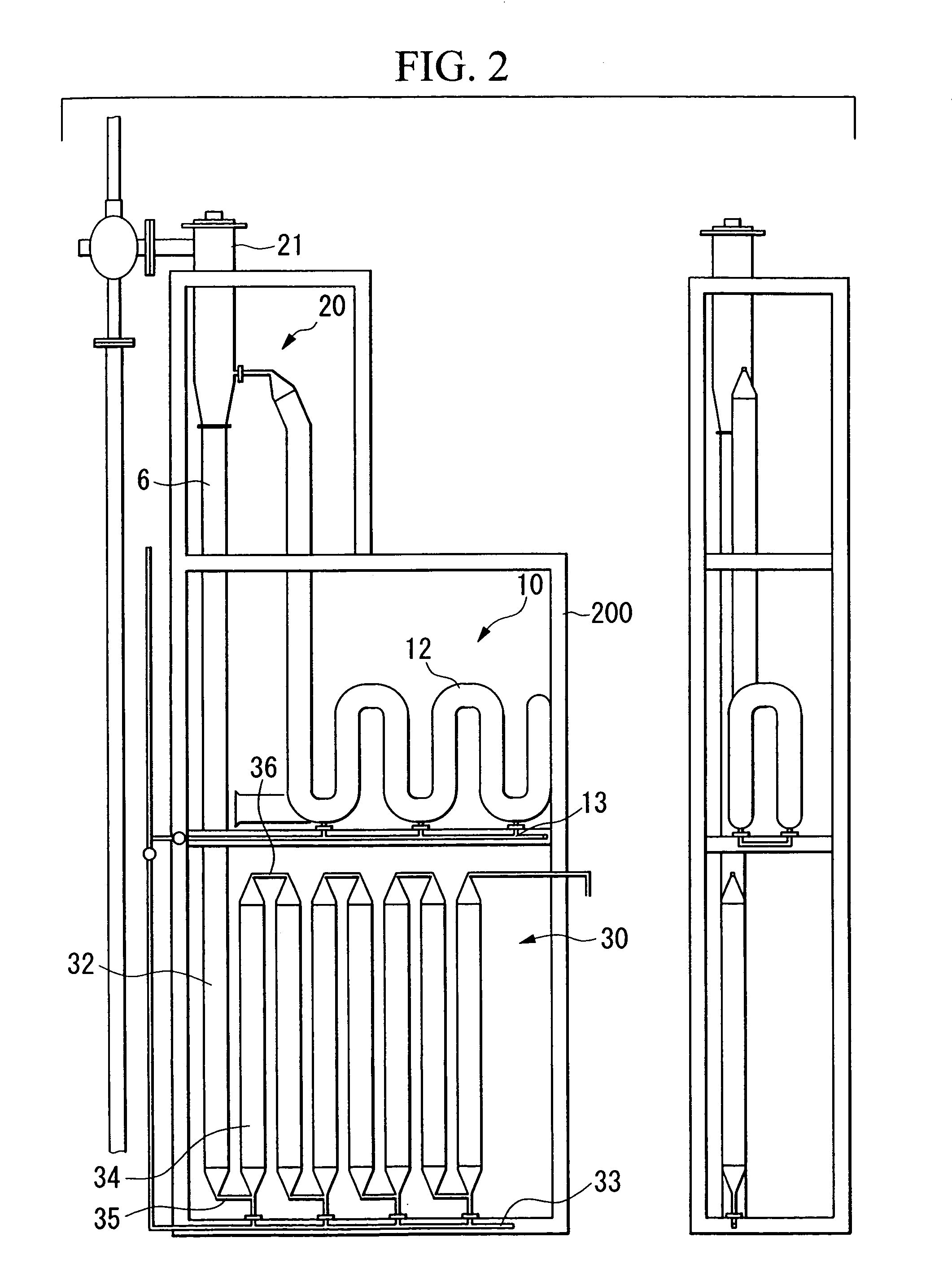Production method for processed soybean food products and apparatus for thermal deaeration of soybean slurry
a production method and technology for soybeans, applied in the direction of liquid degasification, separation processes, grain treatment, etc., can solve the problems of affecting the final product, affecting the quality of finished products, so as to achieve effective removal of unpleasant raw odor and high quality
- Summary
- Abstract
- Description
- Claims
- Application Information
AI Technical Summary
Benefits of technology
Problems solved by technology
Method used
Image
Examples
example 1
[0091]Soybean slurry was thermally deaerated using the soybean slurry thermal deaeration apparatus 1 shown in FIGS. 1 and 2 to produce soymilk. The production method used is given below.
(1) Immersion Step
[0092]60 kg of American soybeans (IOM: imported by Mitsui & Co., Ltd.) were washed and hulled and then were made to swell by being immersed in flowing water for 12 hours.
(2) Grinding Step
[0093]The swollen soybeans obtained in the immersion step were supplied together with 170 kg of water to a grinder (manufactured by Nagasawa Kikai Seisakusho Co., Ltd.) and the soybeans were ground so that approximately 220 kg of soybean slurry (i.e. raw soy) was obtained.
(3) Thermal Deaeration Step
[0094]The soybean slurry (raw soy) obtained in the grinding step was circulated through the thermal deaeration apparatus 1 shown in FIG. 1, and a heating step and a deaeration step were performed under the operating conditions given below.
[0095]Soybean slurry (raw soy) was stored in the soybean slurry sto...
examples 2 to 9
[0110]The intermediate temperature (i.e. The value indicated by the temperature gauge 5) was changed so that the temperature difference before and after deaeration and the pressure in the deaeration chamber (i.e. The value indicated by the pressure gauge 26), and the final temperature (i.e. The value indicated by the temperature gauge 8) became the values shown in Table 1. Other than this, the soymilk was produced and evaluated in the same way as in Example 1.
[0111]The evaluation results are shown in Table 1.
examples 10 to 18
[0122]Apart from the intermediate temperature (i.e. The value indicated by the temperature gauge 5) being set to 94° C. and the temperature of the soybean slurry after deaeration (i.e. The value indicated by the temperature gauge 7) being set to the temperatures shown in Table 4, soymilk of differing deaeration levels was produced in the same way as in Example 1. The obtained soymilk was evaluated in the same way as in Example 1. The evaluation results are shown in Table 4. Note that the pressure inside the deaeration chamber 21 (i.e. The value indicated by the pressure gauge 26) and the final temperature (i.e. The value indicated by the temperature gauge 8) are also shown in Table 4.
[0123]
TABLE 4IntermediateTemperatureTemperaturePressure inFinalExampletemperatureafterdifference before anddeaerationtemperatureNumber[° C.]deaeration [° C.]after deaeration [° C.]chamber [MPa][° C.]EvaluationExample 1094940−0.020100ΔExample 1194931−0.025100ΔExample 1294922−0.028100ΔExample 1394913−0.03...
PUM
| Property | Measurement | Unit |
|---|---|---|
| Temperature | aaaaa | aaaaa |
| Temperature | aaaaa | aaaaa |
| Temperature | aaaaa | aaaaa |
Abstract
Description
Claims
Application Information
 Login to View More
Login to View More - R&D
- Intellectual Property
- Life Sciences
- Materials
- Tech Scout
- Unparalleled Data Quality
- Higher Quality Content
- 60% Fewer Hallucinations
Browse by: Latest US Patents, China's latest patents, Technical Efficacy Thesaurus, Application Domain, Technology Topic, Popular Technical Reports.
© 2025 PatSnap. All rights reserved.Legal|Privacy policy|Modern Slavery Act Transparency Statement|Sitemap|About US| Contact US: help@patsnap.com



